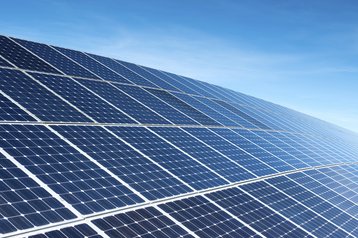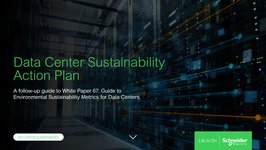Building more sustainable data centers is undoubtedly good for the planet. However, the strongest drivers for that evolution come from another carrot -- and a stick.
Stick-wise, making data centers more eco-friendly is no longer a choice because new global regulations and guidelines will enforce compliance in the coming years. While these rules are a forcing function for greener data centers, a big carrot accelerates the process. Companies with on-premise data centers, and businesses providing hosting services, stand to save a lot of money by going green.
Data centers require a substantial amount of electrical power. A 2021 estimate suggested that global data centers devoured around one percent of electricity worldwide. Up to 40 percent of that energy goes to data center HVAC cooling systems rather than additional compute performance. And over recent years, the average global cost of electricity doubled, driving up data center usage costs significantly.
Water use is another expensive proposition. A single 100MW data center can use up to 1.1 million gallons of water per day. In the US alone, data centers across the country consumed over 660 billion liters. By taking steps to reduce their data center's power and water consumption, companies can bring down the long-term cost of running their server infrastructure while reducing their carbon footprint at the same time.
Companies seeking ways to maximize their performance-per-watt and minimize their total power consumption have several levers to pull. Below we explore a few of them.
- Consider liquid cooling options: Freshwater supplies are finite, and cooling data centers with other engineered liquids can significantly reduce water use. Modern liquid cooling approaches can lower a data center's PUE from an average of 1.3 to results as low as 1.03 and reduce its electricity consumption by up to 30 percent. The added cooling capability also allows data center managers to achieve higher system density in the same-sized rack. As pre-validated fluid-cooled server solutions become increasingly common, they will also be easier to implement.
- Increase workload performance-per-watt by choosing the right data center hardware. Using Intel processors' built-in capabilities can provide impactful energy efficiency gains. Processors such as 4th Gen Intel Xeon Scalable processors feature accelerators that can provide up to 14x better performance-per-watt on AI workloads and a 2.9x average performance-per-watt efficiency improvement for targeted workloads.
- Choose products manufactured more sustainably to reduce your carbon footprint: Today, roughly ten percent of a server's carbon footprint comes from the manufacturing process itself. The other 90 percent comes from actual server usage. Many major tech companies already committed to shrinking their carbon footprint in manufacturing. Through their sustainable investments, fabs are making significant progress against green goals. For example, 4th Gen Intel Xeon processors are manufactured with at least 90 percent renewable electricity.
- Measure and monitor electricity: Tracking the "when, where, and how" of electricity consumption in a data center can help reveal patterns that allow system administrators to optimize and tweak their architecture. Additional software tools can increase efficiency, including open-source options and Intel-developed Kubernetes Power Manager and Telemetry Aware Scheduling capabilities.
- Optimize software for energy efficiency: Building software for eco-friendliness was not an original priority for developers, but the Green Software Foundation seeks to change that. They provide tools, standards, and best practices that help make the software more carbon-conscious. Developers embracing eco-friendly coding practices can optimize their applications to reduce the amount of electricity and compute resources necessary to run various workloads.
- Adopt circular economy practices and modular approaches to lower eWaste: Aging computing equipment can end its life in a landfill and contribute to environmental challenges. Modern manufacturers have identified ways to eliminate potentially hazardous materials like halogen or lead from their products. However, it's ideal if old gear can extend its service life. Using circular economy strategies, data center managers can reuse computing assets or place them into secondary market programs. For the future, tech equipment manufacturers currently explore a more "modular" approach to their newest products. By upgrading individual components inside existing servers, a data center's hardware investment can have a much longer useful lifespan yet take advantage of the latest technologies.
Each data center differs, so sustainability strategies are not a one-size-fits-all proposition. Data center managers must evaluate which approaches can impact their use cases most. But one thing's for sure. The combined global effort to reduce the tech industry's carbon footprint serves an essential purpose.
International legislation may push for greater data center efficiency, but the technology ecosystem innovated unique ways to embrace new regulations and, in some cases, exceed the government-mandated requirements. As the old saying goes, "It takes a village." And it's thrilling to see major tech players come together to make the industry more sustainable.




